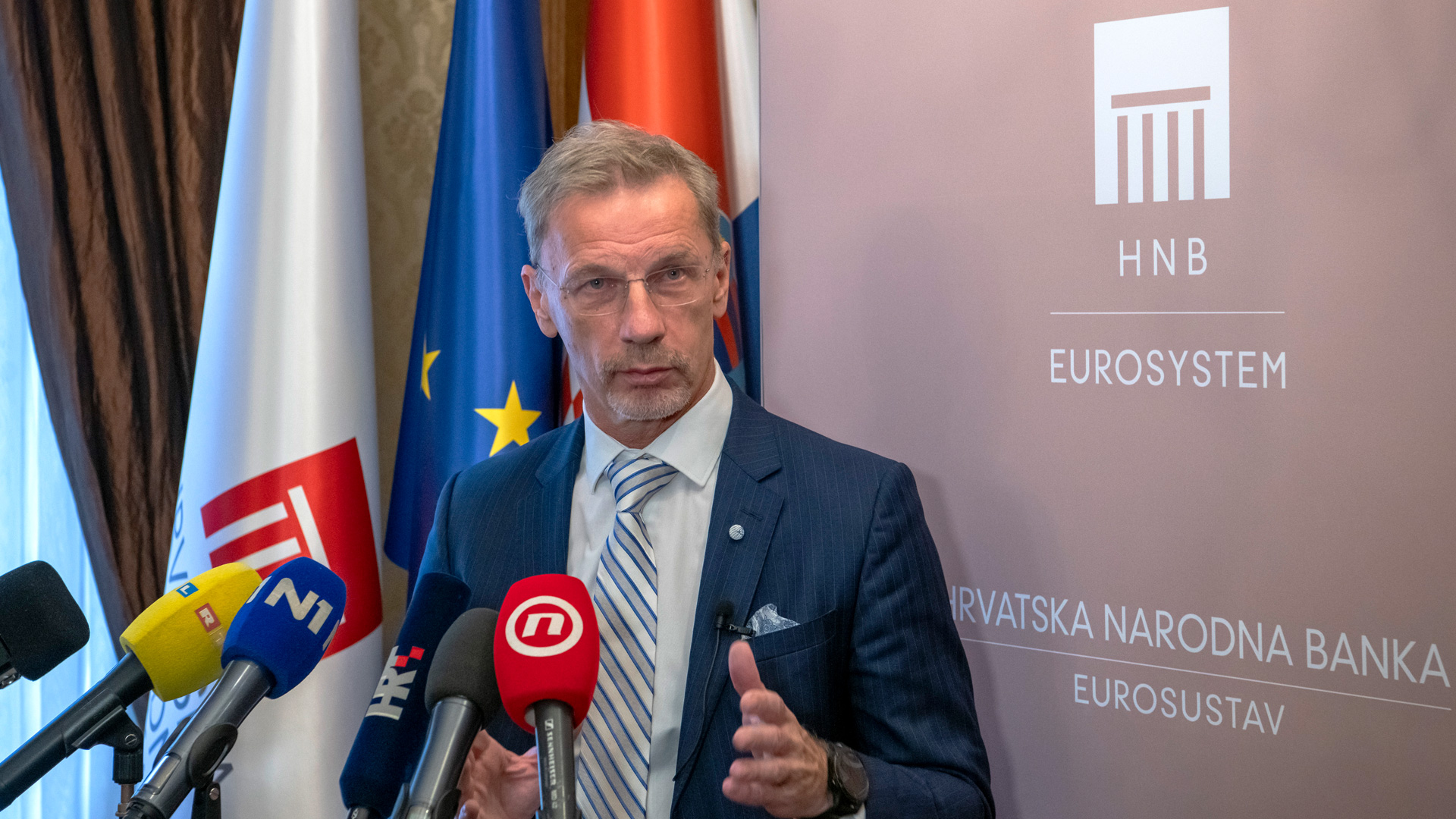
At the annual media briefing held today, Croatian National Bank Governor Boris Vujčić presented the CNB’s macroeconomic projections for 2025. The Governor noted that Croatia’s economic growth accelerated in 2024 and is expected to remain relatively strong, although at a slightly lower level, in the following two years.
Economic expansion, which marked the first half of 2024, continued in the third quarter, and growth is likely to remain robust at the end of the year too, so that real GDP could grow by 3.7% in 2024 as a whole. The acceleration of economic growth primarily reflects strong domestic demand, supported by favourable labour market developments, a very stimulative fiscal policy and the private sector’s strong investment activity. Goods exports also strengthened, while services exports started to decline. Croatia’s real GDP could continue to increase at an average annual rate of slightly over 3% in the following two years. Exports of goods and services are expected to make a larger contribution due to the anticipated gradual recovery of foreign demand, which is to be supported by the projected decrease in financing costs, based on market expectations of the continued fall in interest rates. The intensity of domestic demand growth could weaken, primarily as regards the growth of investments, which could decelerate following their strong growth supported by EU funds in the previous three years. Risks to the central projection of Croatia’s real growth are balanced, but remain elevated due to ongoing and potentially escalating geopolitical tensions and developments in the prices of raw materials and energy. Protectionist trade measures could have a negative impact on Croatia’s goods exports by reducing the foreign demand of its main trading partners. Investment growth will depend on the efficient use of EU funds, especially by the public sector. The potential easing of geopolitical tensions could boost foreign demand and favourably influence exports. The strengthening of consumer confidence could lower the currently projected household savings rate, spurring personal consumption growth.
HICP inflation is expected to decelerate to 4.0% in 2024 and to continue slowing down, although at a weaker pace, in the following two years (to 3.5% in 2025 and 2.5% in 2026). The inflation slowdown in the current year mirrors the weakening of current inflationary pressures, coupled with favourable base effects that contributed to its slowdown in the first eight months of 2024. Broken down by individual components, core inflation and food inflation decelerated this year. However, core inflation could remain elevated due to the strong domestic demand, robust labour market and increased wage growth. Food inflation could also remain elevated, given a marked increase in current pressures in the second half of 2024. Inflation is expected to slow down in the following two years, reflecting a slowdown in core inflation in 2025 and in all main inflation subcomponents in 2026. Risks surrounding the projected inflation path are mostly balanced. Upside risks to inflation primarily stem from geopolitical tensions, which could push the prices of energy and other raw materials higher. As regards domestic factors, inflation could be higher should the growth of domestic demand or the spillover of the nominal wage growth to consumer prices be stronger than expected. In contrast, risks that could bring inflation down include weaker economic growth and, consequently, weaker demand, the stronger effects of restrictive monetary policy and a more pronounced spillover of the decrease in energy and other raw materials prices in the world market.
The number of employed persons is expected to grow by 3.4% in 2024, while the ILO unemployment rate could fall to 4.9% of the labour force. The current year was also marked by a strong wage growth. Labour market developments are expected to remain relatively favourable over the remainder of the projection horizon. The number of employed persons in Croatia continued to increase in the second half of the year, boosted by the strong domestic economic activity. The registered unemployment rate declined to 4.8% of the labour force in October, while the ILO unemployment rate stood at 4.7% in the second quarter. Nominal wages continued to grow vigorously, spurred by strong demand for labour amid low unemployment. The average nominal gross wage could grow by 14.9% and real wage by 10.7% in 2024 as a whole. In the remainder of the projection horizon employment is expected to grow, the unemployment rate is expected to reach all-time lows, while nominal and real wages are expected to increase, although at a more moderate pace than this year.
The current and capital account surplus could amount to 1.1% of GDP in 2024, a decrease of 2.2 percentage points from the previous year. This was mainly a consequence of a decline in the use of EU funds after the record previous year, which saw the closure of the multi-year financial envelope and disbursements to end beneficiaries peaking as well as the end of the utilisation of funds from the EU Solidarity Fund for the reconstruction of earthquake-hit areas. In addition, also contributing to unfavourable developments is the widening of the foreign trade deficit and the deterioration of the balance of net services exports after several years, due to the strong growth of imports and the stagnation of services exports. On the other hand, unfavourable balance of payments developments in 2024 have been partly offset by the improvement of the primary account balance, primarily resulting from the growth of central bank revenues generated by the management of non-monetary financial assets. The current and capital account surplus should remain at approximately the same level as in 2024 until the end of the projection horizon.
CNB’s macroeconomic projections for Croatia – December 2024
Macroeconomic Developments and Outlook, No 17
